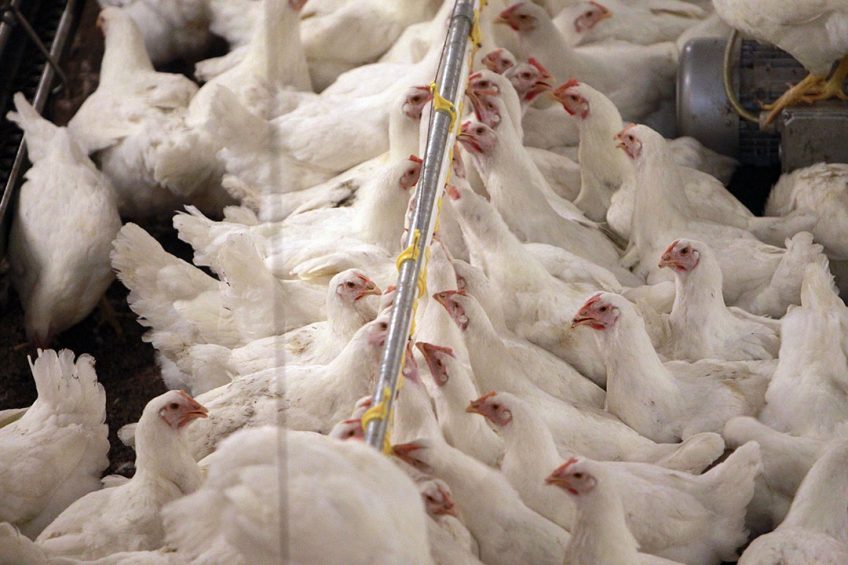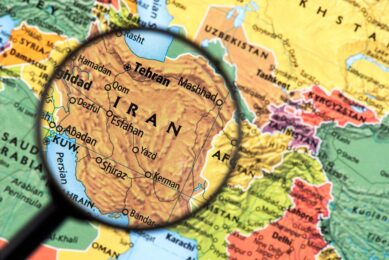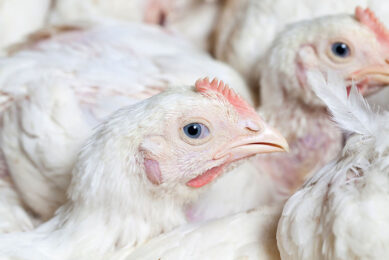Poultry production under the microscope

Last year, Chicken Farmers of Canada (CFC) began its first ever Life Cycle Assessment (LCA), and the results give broiler producers around the world much food for thought. The analysis also includes a look at how far the industry has come from the mid-1970s, and provides benchmarks that can be used to measure future improvements.
A Life Cycle Assessment is recognised internationally as a holistic approach to assessing the impacts associated with all of the stages of a product’s ‘life,’ with well-established protocols that are subject to ISO methodology. LCA’s can help a whole industry determine which aspects of its production are most efficient and where there is room to boost efficiencies, further reduce environmental impact or further improve social interactions along the entire value chain.
In the main, the CFC assessment has provided Canada’s chicken industry with benchmarks, from hatching to processing, on its impact on climate change, natural resources, ecosystem quality and human health, as well as a report card for socio-economic performance. “Conducting an LCA is part of our strategy to support our industry’s work in maintaining consumer and buyer confidence that supply chain risks are adequately addressed,” states CFC. “It can also improve industry’s social licence and assurance to consumers that chicken is safe and produced in an efficient and responsible way.”
Neutral third-party results
Steve Leech, CFC manager of food safety and animal health, says his organisation wanted the assessment completed in order to have an independent view. “An impartial analysis enables us to then take impartial results about our production footprint and talk to consumers, supply chain members such as retailers and restaurants and government,” he explains. “This includes independent benchmarks to use going forward. We now know what factors are involved in the environmental footprint of our sector to greater and lesser degrees, and what steps need to be taken to lessen those where possible. That’s part of the analysis being done now.” One of those steps might be to have even more Canadian chicken farmers complete what’s commonly called an Environmental Farm Plan (which goes by different names in some provinces). Leech notes that about 70% of commercial chicken producers in Canada already have plans in place; these plans analyse water, energy and waste management, biodiversity and much more, and also include steps for improvement.

Indeed, the analysis of chicken industry factors that have more or less environmental impact also reinforces what CFC had already gathered from looking at international studies of chicken production. “But it’s good to have the Canadian data,” Mr Leech notes. “We know that about half the impact of chicken production in Canada is feed production, and a quarter is the broiler production stage, and about half of that is heating. Canada is a cold-climate country, but certainly there are opportunities to look at alternative sources of heat for broiler barns. However, we also need consumers, retailers, government – everyone – to recognise that some of the factors that affect a production footprint are beyond the control of the sector. They aren’t a choice that the sector would make if it could. For example, electricity is generated in certain ways in some areas of Canada that is more environmentally-friendly than others.” Mr Leech points out, however, that some Canadian chicken farmers are already generating electricity on-farm from alternative energy sources such as wind or solar and have also already substantially reduced electricity use through technologies like LED lights.
Yet another benefit of the LCA is its positioning of chicken production’s footprint within the spectrum of livestock sectors, an analysis completed through a close look at similar analyses across the globe; if all that was not enough, there is also a look at the production footprint of chicken production 40 years ago, in order to determine how far the industry has come (see box).
Key findings of the Life Cycle Assessment
|
Nuts and bolts
The LCA analysis was completed using several sources of information: a survey of farmers and stakeholders and secondary sources including literature reviews and interviews with experts. There was good ‘buy-in’ in terms of broiler producers completing the survey, says Leech. About 300 producers participated, which is more than 10% of the total number, and from all across the country. CFC let chicken farmers know about the survey and LCA by putting a call out nationally and through the provincial chicken boards and presenting about it at regional meetings. There were a few prizes offered to producers to entice them to complete the surveys.
The CFC Canada LCA was conducted by Groupe AGÉCO, a Quebec-based consulting firm specialising in corporate social responsibility and economic studies. François Charron-Doucet, scientific director of corporate responsibility services, says his firm has done over 100 LCA-related studies over the last ten years or so in the farming sectors of dairy, grain, pork and more. “Fundamentally the approach is always the same, but the methodology has improved over time,” he explains. “In this LCA, it was a little different and very good to have primary data collection from the whole supply chain. This provides a complete picture and also allows a more strategic approach when planning industry improvements. Secondly, the UN Food and Agriculture Organization (FAO) recently produced LCA guidelines for various sectors, and this LCA is one of the first poultry ones in the world based on those guidelines. The survey results were also very good in this case.” About 20 Canadian experts were interviewed, some providing technical insight on production practices and some providing more strategic leadership viewpoints on various supply chain aspects.

In addition to the obvious reasons (such as boosting credibility, benchmarking, demonstrating leadership), Charron-Doucet thinks that more LCAs are being completed these days to help streamline entire sectors for the better. “In the past, people thought that social and environmental issues could be managed on a case by case basis, but now it’s felt that the complexity of these issues requires more robust and credible tools such as an LCA,” he notes.
And, whilst it’s possible that companies, associations or industries could obtain LCAs completed that aren’t done correctly (due to faulty methodology or not enough data for example, or even the unethical exclusion of data) Charron-Doucet notes that this would be a bad mistake that is easily avoided by working with a reputable firm. He says that in general, no one generally wants to put in all the time and work to create an LCA that would put their credibility at risk.
Use of the results
Going forward, Mr Leech says “we’re going to use the LCA on our website and talk to retailers and restaurants and government and consumers to show that we are being proactive in terms of sustainability, and also have a framework in place going forward. The LCA lends the Raised by a Canadian Farmer brand, which represents our achievements related to both animal care and environmental sustainability, further confidence and credibility as well.”
When asked why there was no comparison with vegetarian food products, Mr Leech says they wanted to keep the study’s focus on livestock. As to what the LCA cost and when a return-on-investment in terms of tangible benefits of the LCA will be gained by producers, Leech notes that “CFC didn’t approach this initiative from an ROI perspective at all. This was information that was important for us to have, so that we can ensure that we’re always delivering on our commitment to sustainability excellence.” On the topic of the LCA, CFC Chair Benoît Fontaine has recognised that whilst “we have come a long way with the implementation of on-farm programmes…we’ll always have more work to do and we will continually evolve to improve our practices and deliver on the expectations of Canadian consumers.”
Join 31,000+ subscribers
Subscribe to our newsletter to stay updated about all the need-to-know content in the poultry sector, three times a week. Beheer
Beheer








 WP Admin
WP Admin  Bewerk bericht
Bewerk bericht